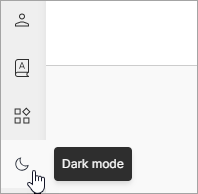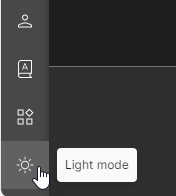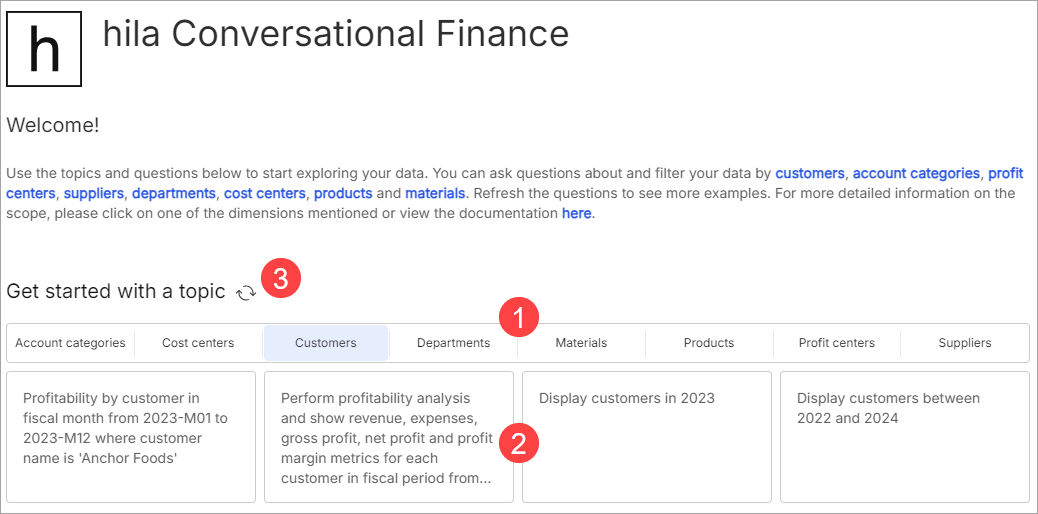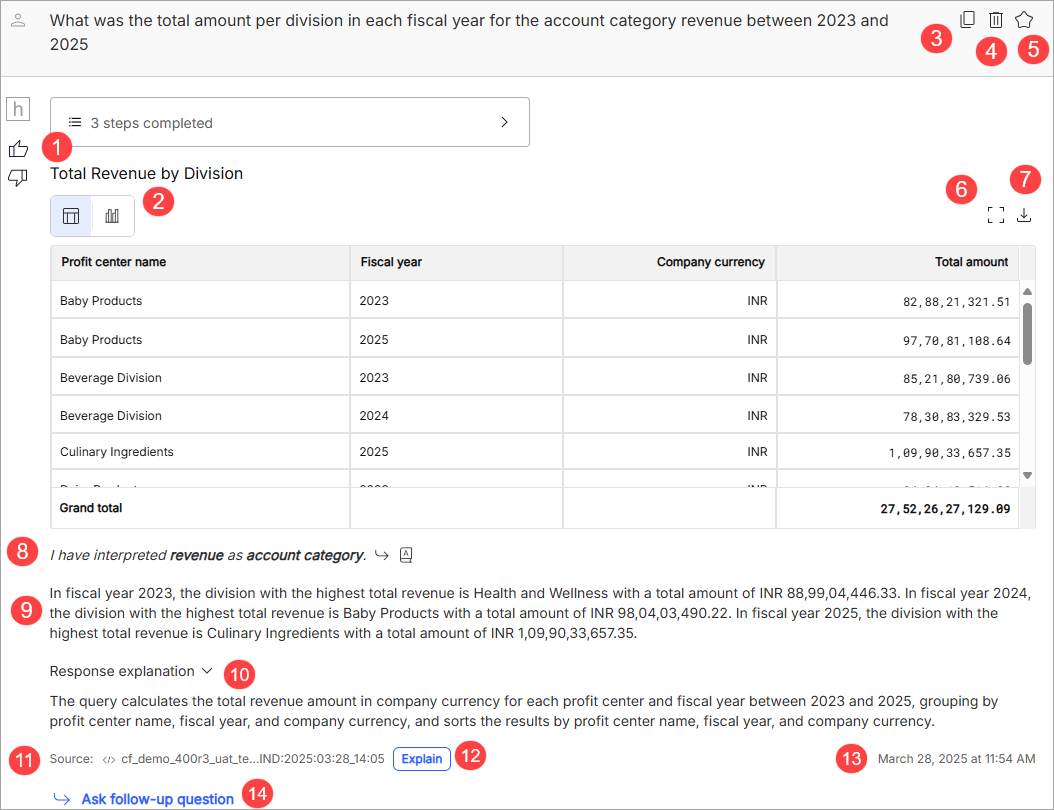Conversational Finance user guide
For an FP&A employee in a CFO office, hila’s Conversational Finance app provides timely and accurate information with charts, tables, and analysis on ERP systems. With Vianai’s specialized models and anti-hallucination features, the responses from a system of record are accurate and occur after asking a simple question, with no need to send the question to a business analyst, an IT department, or a specialist for further analysis.
Welcome window
When you open the hila UI, the following welcome window appears, giving you a quick reference to the conversation page, including sample questions to give you an idea of what kinds of questions you can ask.
-
Select a tab to narrow the conversation to a specific area.
-
Select a suggested question to open the conversation page.
-
Refresh the suggested questions.
Workflow
The basic Conversational Finance flow consists of:
- Select data sources.
- Ask questions.
- View answers.
- Ask follow-up questions.
Select data sources
By default, hila selects the data source you used last. If you have not used hila before, you must select a data source.
-
Open the Data Sources pane with the Data Sources menu item.
-
Select Database from the Data sources pane.
-
Select the name of the database your admin has connected to your financial system. If you don’t know this, check with your admin.
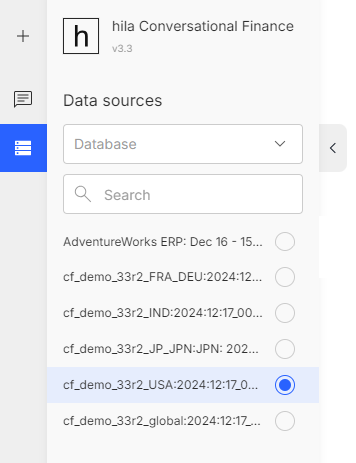
Ask questions
-
Type a question in the text box at the bottom of the window.
-
Show suggested and past questions toggles the list of suggested questions to show the type of questions you can ask. If the toggle is on (which is default) then the following occurs:
- When you click into the question box, sample questions appear from which you can select a question.
- As you start typing, the suggested questions filter to reflect the text you have entered.
- When you select a question, you can edit the question in the text box before submitting.
-
View favorite questions only: If you have marked questions as favorites, you can filter the suggested questions to show only your favorites.
Note: If you favorite a follow-up question, its parent question also appears. -
The blue box shows the data source you have selected or “No source selected”. If you have selected multiple data sources, it shows how many data sources you have selected. Multiple data sources is only applicable for document data sources.
Note: Click the blue box to open the Data Sources pane where you can update your data source choices.
hila CF generates the answer
-
While hila CF generates the answer, a box appears above the question showing the status of the answer generation. You can expand this box for more information on the process.


-
If an error occurs, a message appears in the answer window. Click the message to expand it and see more details.

The following table shows the error messages and actions you can take to resolve the error.
Header Text Action Explanation Question out of scope LLM generated error message + Please try changing your question. Edit the question. The question or topic is beyond the scope of hila. Question cannot be answered I’m sorry, but I’m not confident in answering your question using the context provided. Please try changing your question or rephrasing to get an answer. Edit the question or select a suggested question. The question is not in the right form or does not match an internal question. No data found I’m sorry, but there was no data found for your question. Please try changing your question or rephrasing to get an answer. Edit the question or select a suggested question. No data was retrieved. Database error I’m sorry, but it looks like I ran into a database issue. Please try changing your question or rephrasing your question. If this problem persists, please contact your administrator. Edit the question or select a suggested question. A database error occurred.
View answers
If hila CF finds an answer, it shows the answer in the main pane of the window.
-
Click thumbs up or thumbs down to evaluate the answer. This feedback helps hila learn how to answer your questions better.
-
The table view/chart view switches between table and chart views.
If you select chart, the following additional controls appear:
- Select the style of chart. hila chooses the best type of chart for the data by default, but you can select any alternate chart hila generates.
- Copy chart.
- Hover over an area or bar to see the values.
- Select an item in the legend to toggle the visibility. This is particularly helpful if the answers are difficult to see because they have different scales or different units.
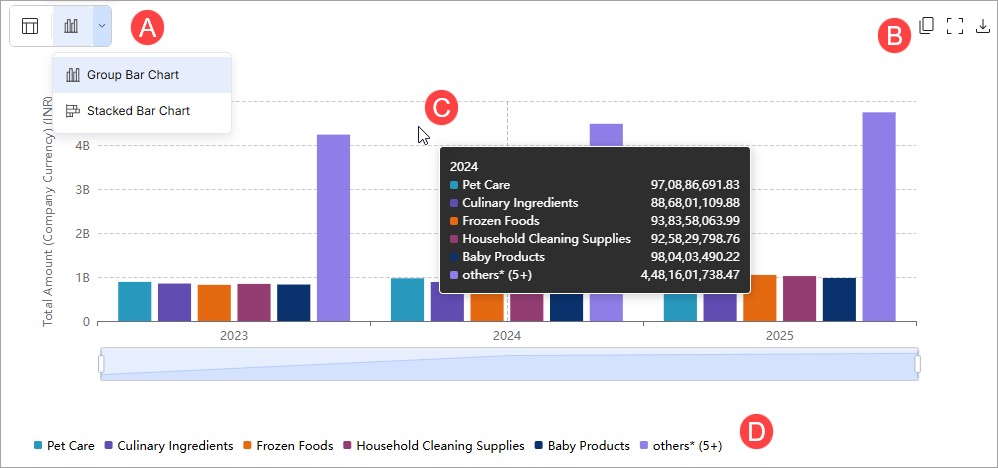
Note: The bar chart is the standard chart, but hila has other charts types for different types of data. See Conversational Finance charts for more information.
-
Copies the question to the clipboard.
-
Deletes the question.
-
Marks the question as a favorite.
-
Enlarges the table or chart to fill the screen.
-
Downloads the table as a CSV file or the chart as a PNG file.
-
Shows any interpretation hila made of terms in the question. For admins, a link appears to add the term to the custom lexicon. See Disambiguation below.
-
The summary provides key insights into the answer.
-
Response explanation provides a detailed explanation of the answer.

-
The data source is stamped in case you come back to this conversation later and want to know where the data came from.
-
The Explain button opens the View source window. For admins only.
-
A timestamp shows when the answer was generated.
-
Ask follow-up question allows you to ask a follow-up question related to the answer.
For example, if you ask a question about a company’s revenue, you can follow up with questions about the company’s revenue by quarter, by product, or by region. Or if you ask about a time range, you can add to or remove from that time range in a follow-up question.
To ask a follow-up question, click the Ask follow-up question link that appears below the answer.
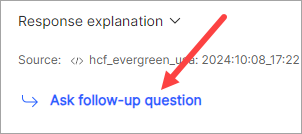
The query entry box shows a Follow-up chip, indicating you are asking a follow-up question.
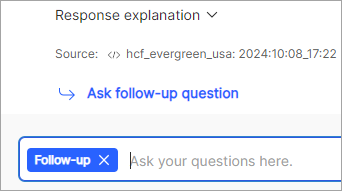
Notes:
- By default, hila allows a context window of four questions, after which the Follow-up chip is deactivated.
- If an error occurs, no more follow-up questions are permitted.
- You can reset the context by creating a new conversation or by clicking the X in the Follow-up chip.
Disambiguation
hila accounts for two types of ambiguity: incomplete information and unfamiliar words or phrases.
-
If you ask a question with incomplete dimension information, hila gives a ‘More information needed’ message and suggests ways to clarify your question.

-
If you ask a question where hila needs to interpret a word or phrase, hila gives an answer and reports which word or phrase it interpreted (see 1 in the following image).
- Click the arrow icon (2) to ask a follow-up questions based on hila’s interpretation.
- Click the book icon (3) to add hila’s phrase to your custom lexicon (admins only).

Ask follow-up questions
Other basic features
-
Manage conversations and questions
-
Select color mode
You can select dark mode or light mode by clicking the bottom-most icon in the left pane of the window.
